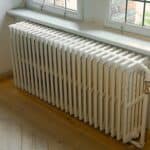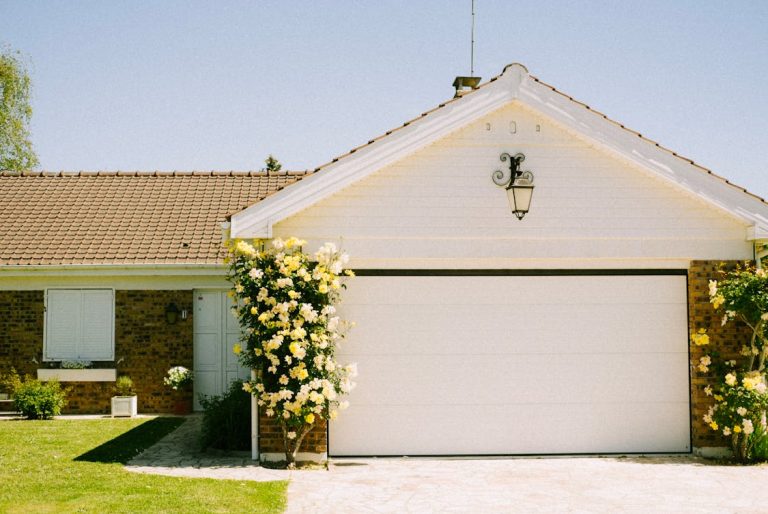Many homeowners find themselves climbing into their loft or attic for a variety of reasons—perhaps to retrieve holiday decorations or sift through long-forgotten family photos. These tucked-away spaces can even transform into something more significant, like a cozy bedroom or an efficient home office. What many don't realize, however, is the tremendous impact that proper …
How to Insulate a Loft: Quick Tips for a Cozier Home

Many homeowners find themselves climbing into their loft or attic for a variety of reasons—perhaps to retrieve holiday decorations or sift through long-forgotten family photos. These tucked-away spaces can even transform into something more significant, like a cozy bedroom or an efficient home office.
What many don’t realize, however, is the tremendous impact that proper loft insulation can have on both home comfort and energy costs.
While some may assume that insulating a loft is a task strictly for professional hands, the reality is that with the right guidance and a touch of do-it-yourself spirit, anyone can tackle this project.
Efficient insulation doesn’t just preserve warmth; it’s also a smart move for the wallet-conscious, potentially leading to noticeable savings on heating expenses.
This guide walks through the key steps to securely insulate a loft, ensuring that this essential home improvement task is both approachable and effective.
Understanding Loft Insulation
Loft insulation serves as a thermal barrier for homes, essentially keeping heat from escaping in the winter and blocking hot air intrusion in the summer.
Positioned between roof beams or floor joists, depending on the design of the space, the insulation’s placement varies accordingly.
Materials typically used for this purpose include:
- Mineral Wool: Resistant to fire, known for its effective insulating properties.
- Sheep Wool: A natural insulator, it also provides resistance to fire.
- Fibreglass: An often used material that traps pockets of air, contributing to its insulating capability and fire resistance.
Each choice offers a reliable way to conserve heat within a property while providing an added layer of safety due to their fire-retardant nature. This ensures the loft doesn’t act as an accelerant in case of a fire.
Benefits Of Loft Insulation
Installing loft insulation yields several advantages:
Energy Savings: Loft insulation is a practical approach to slashing home heating costs. By trapping heat indoors, there’s less reliance on the heating system during cold spells, thus, trimming down your utility expenses.
Enhanced Home Efficiency: A loft that’s well-insulated augments your home’s energy efficiency. It retains warmth when it’s cold and blocks out heat when it’s hot, lessening the strain on heating and cooling devices.
Environmental Impact: A significant ecological advantage of insulating your loft is the reduction in energy consumption. This diminishes the emissions of greenhouse gases, thereby playing a role in environmental preservation and aiding in the fight against global warming.
The effectiveness of loft insulation is largely influenced by both the quality of the materials used and the proficiency with which it is installed.
Therefore, it’s crucial to ensure that the loft insulation is executed meticulously to fully reap the aforementioned benefits.
Choose The Right Insulation
Selecting the proper insulation for a loft is crucial for its effectiveness and can even cut energy costs by around 15%.
Insulation thickness is key, with 270mm being the standard recommended depth. To work out how much more insulation to add, measure the current depth in the loft and subtract from 270mm.
To calculate the insulation your loft requires, check the following:
- Measure the length and width of the loft
- Multiply these to get the total area in square meters
- For joist insulation, measure the distance between joists, which is usually between 400mm to 600mm
Insulating materials vary widely and the right choice depends on the loft specifics. Here’s a quick format guide:
- Blanket Insulation: Easy to place between and over joists; suitable for most lofts
- Loose-Fill Insulation: Ideal for irregular spaces and for topping up existing insulation
- Blown-In Insulation: Quickly covers large areas; requires a machine and professional installation
Remember that different materials and brands may cover different areas per pack, so always cross-reference the area you calculated with the coverage provided. This will determine the number of packs you’ll need to purchase.
Essentials for Loft Insulation
To ensure a safe and efficient insulation process, one needs the following items:
- Insulation rolls or boards: The main component for insulating an attic.
- Safety gloves: Necessary for handling insulating materials without skin irritation.
- Measuring tape: For accurately measuring insulation and space between joists.
- Utility knife: For cutting insulation to the required sizes.
- Knee protection: To prevent discomfort when moving across attic floor joists.
- Light source: To maintain visibility in the attic environment.
- Respiratory mask: To avoid inhaling insulating material particles during installation.
Loft Insulation Methods
Getting the Loft Ready
Before any insulation work begins, ensuring the loft is safe and ready is paramount.
Lighting needs to be adequate for clear visibility. All structural components, such as joists and rafters, should be inspected for integrity. Damaged structures could pose a safety hazard and might necessitate professional repair.
Removing dust is essential to create a cleaner working environment and reduce health risks.
Moreover, distributing loft panels across the area provides a stable surface for movement and minimizes strain on the joists.
It’s beneficial to use personal protective equipment, including goggles, masks, and knee pads, to safeguard against potential hazards during the insulation process.
Insulating Joist Gaps
For the initial phase of insulation, one should roll out the insulating material snugly between the joists, aiming for a thickness close to 100mm without compressing the material, as this ensures optimal thermal performance.
Adding Insulation Layers Above Joists
To enhance insulation thickness, additional layers are laid perpendicular to the joists.
This step aims for enhancing the total insulation depth to around 270mm, beginning farthest from the loft entrance, and ensuring adjacent insulation strips touch without overlapping, creating continuous coverage.
Loft Entrance Insulation
Insulating the loft entrance can prevent significant heat loss, estimated at around 5%.
Attaching insulation to the inner surface of the hatch door with staples or adhesive can effectively seal in warmth.
Safeguarding Water Systems
Insulation of water tanks and pipes in the loft is crucial to prevent freezing.
Tailored insulation wraps easily secure around pipes, while tanks can be covered efficiently with pre-made jackets suitable for various tank sizes.
Rafter Insulation from Below
For rafter areas, one can apply rigid foam boards or reflective foil insulation.
Accurate pre-measurement allows for precise trimming of these materials. Rigid boards can be affixed directly to the rafters’ underside with a nail gun, whereas foil insulation requires careful stapling along the rafters, ensuring complete coverage by working back and forth across the loft.
Insulating Between Rafters
Filling the spaces between rafters with insulation requires careful measurement and a mindful approach to maintain a 50mm gap between the material and the roof’s membrane for ventilation purposes.
Nail guns can be deployed to fix insulation materials in place, cutting them to size for a snug fit.









